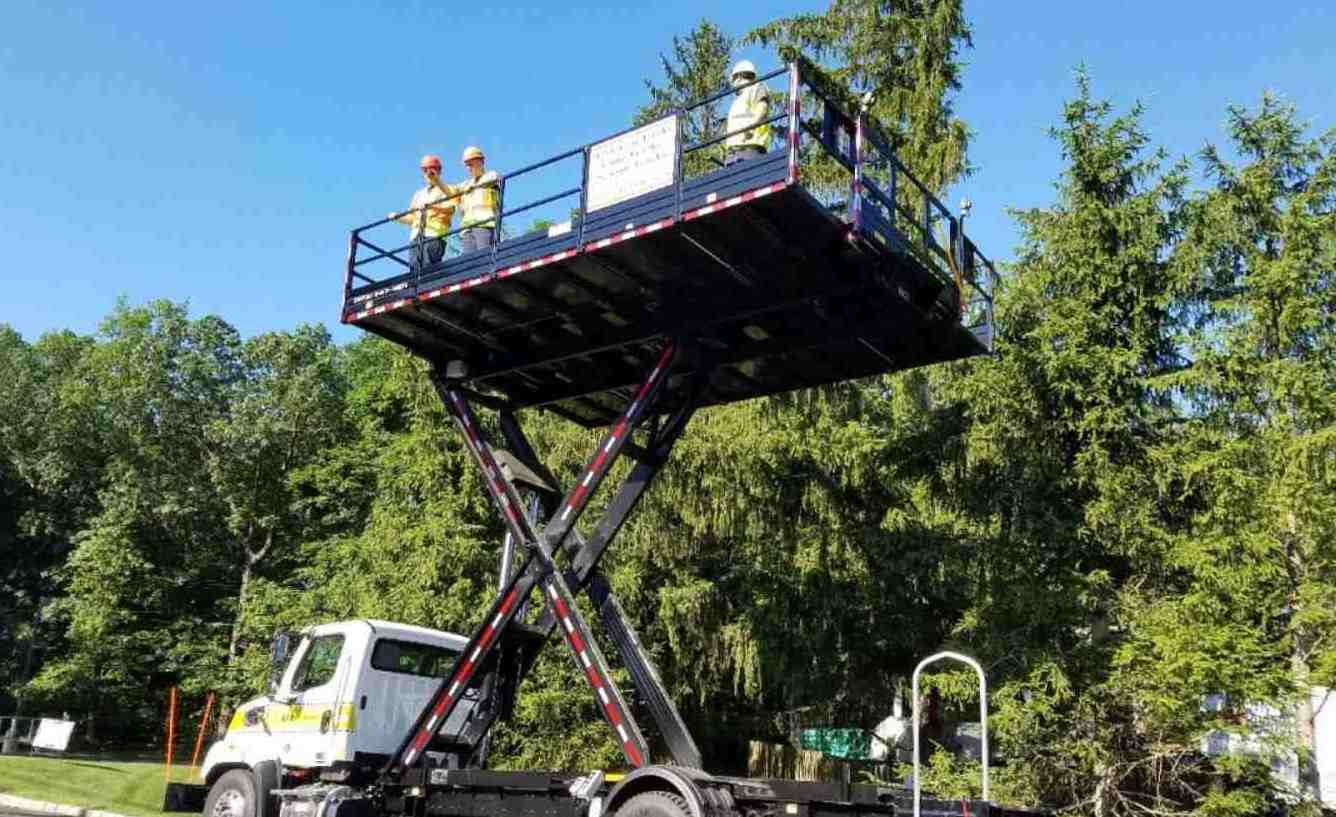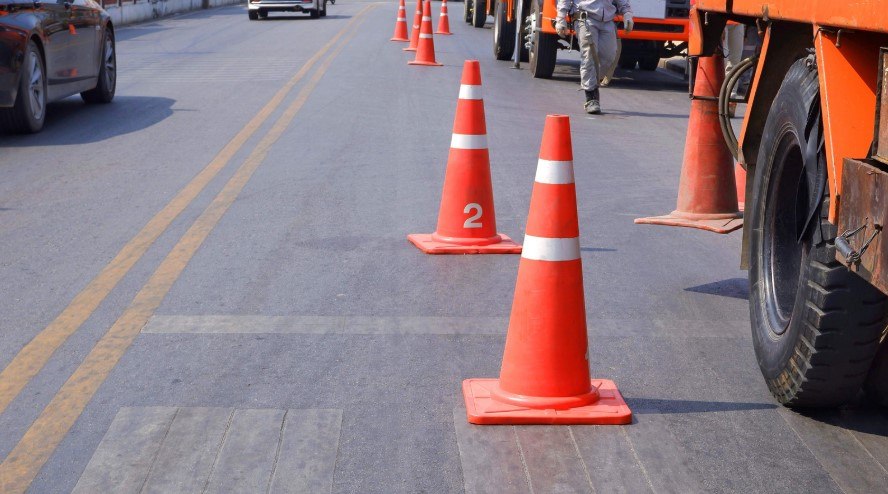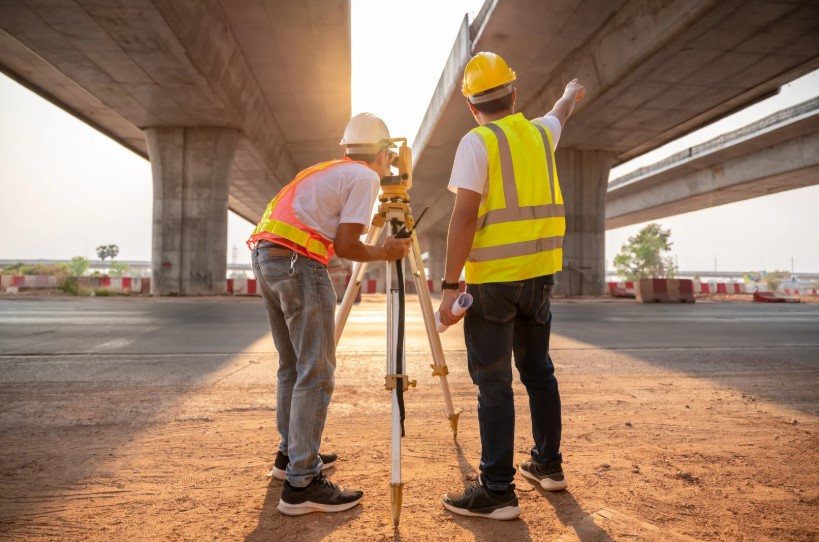The sun isn’t even fully up, but the traffic is already building. Your foreman is staring at the underside of an overpass, then back at the two trucks idling in the staging area. Choose the bucket truck, and you’ll be resetting the outriggers every 20 feet. Choose the scissors, and you might not have the reach. The clock is ticking. Choosing between Scissor vs Bucket Trucks will be discussed in this blog.
Choosing the right elevated work platform is more than a logistical puzzle; it’s a decision that impacts your timeline, your budget, and your crew’s safety. As someone who has helped hundreds of contractors navigate this choice, I can tell you the answer is rarely just about maximum height. Let’s break down the real-world differences in the scissor vs bucket trucks debate.
When Elevation Isn’t Your Only Challenge
Getting your crew in the air is one thing. Doing it efficiently and safely is another. The best choice often comes down to the constraints of your job site.
- Platform vs. Basket: The most obvious difference is the work platform itself. A scissor lift truck offers a large, stable deck, perfect for two or three workers plus tools and materials. Think of it as a mobile scaffolding system. A bucket truck, or cherry picker, has a compact basket, ideal for one or two workers in tight spaces.
- Footprint & Site Impact: A bucket truck requires a wider area to deploy its outriggers, which provide stability for its articulating boom. This can be a deal-breaker in a tight urban corridor or a single-lane closure. A scissor truck, by contrast, typically has a smaller, self-contained footprint, lifting straight up from its chassis.
- Mobility at Height: This is a game-changer. Many scissor trucks are designed to be driven slowly while the platform is elevated. For linear tasks like bridge inspections, light replacement, or sign installation, this is a massive scissor lift truck advantage. A bucket truck must be fully lowered, its outriggers retracted, and the truck repositioned for each new work area, dramatically increasing setup time.
Side-By-Side Feature Breakdown
Let’s put the specs head-to-head. This isn’t about which is “better,” but which is better for your specific task.
|
Feature |
Scissor Lift Truck | Bucket Truck (Articulating Boom) |
|
Reach Height |
Good (Typically 20-50 ft) | Excellent (40-150+ ft) |
|
Side Reach (Lateral) |
Minimal (Platform may have a small extension deck) | Excellent (Can reach up and over obstacles) |
|
Platform Area |
Large (Often 50-100+ sq. ft.) |
Small (Compact basket for 1-2 people) |
| Setup Time | Very Fast (Position and lift) |
Moderate (Position, deploy outriggers, lift) |
| Crew Capacity | Higher (2-4 workers + materials) |
Lower (1-2 workers) |
| Ground Conditions | Prefers flat, stable surfaces |
More forgiving with outriggers on slight slopes |
This bucket truck comparison makes it clear: if your primary need is reaching over obstacles or achieving extreme heights, the bucket truck is your tool. If you need a large, stable work deck for tasks on a relatively flat plane, the scissor truck delivers unmatched efficiency.
Cost & ROI Snapshot
Your budget is a real-world constraint, and it’s about more than the rental or purchase price. Total Cost of Ownership (TCO) tells the real story. Here’s a simplified 3-year projection for a new, comparable mid-range unit.
3-Year Estimated Total Cost of Ownership
|
Cost Factor |
Scissor Lift Truck | Bucket Truck |
|
Purchase Price (Est.) |
$110,000 | $150,000 |
|
Annual Maintenance |
$3,000 | $5,500 |
| Annual Fuel/Energy | $4,000 |
$6,000 |
| Annual Insurance | $2,500 |
$3,500 |
| 3-Year TCO | $129,500 |
$184,500 |
For many, renting is the smarter financial move. It eliminates maintenance headaches and gives you the flexibility to choose the right truck for each job.
How to Calculate Your Rental Cost:
(Daily/Weekly Rate x Duration) + Delivery/Pickup Fees + Insurance = Total Rental Cost
A typical weekly rental might run $1,500 for a scissor truck and $2,200 for a bucket truck, but this varies. The crucial takeaway is that choosing a bucket truck when a scissor truck would do means you’re not just paying more for the rental—you’re losing money on labor due to slower repositioning times.
Safety & Compliance Factors
In the world of elevated work platform safety, compliance isn’t optional. Both truck types fall under OSHA’s standard for aerial lifts, which governs everything from electrical insulation to fall protection. Additionally, the equipment itself must meet stringent design and manufacturing standards.
Here’s what this means for you:
- Daily Inspections: You are required to perform a pre-start inspection of the vehicle and the lift components every single day.
- Operator Training: Only trained and authorized personnel can operate the lift.
- Fall Protection: Workers on the platform must use appropriate personal fall arrest systems (harnesses and lanyards).
At S.P.A. Safety Systems, we don’t just meet these standards; we exceed them. Our entire fleet undergoes a rigorous, multi-point inspection and maintenance protocol far beyond the manufacturer’s recommendations. When you rent from us, you’re not just getting a piece of equipment; you’re getting a guarantee of compliance and reliability.
Real-World Case Study
A New Jersey DOT maintenance crew was tasked with replacing 200 light fixtures on the underside of a two-mile-long overpass. Their initial plan involved a bucket truck, which would have required a full stop, outrigger deployment, and retraction for every four fixtures—a process they estimated would take five full night shifts. After a quick consultation, they switched to one of our driveable scissor trucks. By moving slowly down the closed lane with the platform elevated, they could service 30-40 fixtures per setup. They finished the entire project in just three shifts, saving thousands in labor and getting the road open two days ahead of schedule.
Decision Matrix: Which Truck Fits Your Project?
Use this quick grid to guide your thinking. Find the intersection of your primary needs to see which truck is likely the better fit.
| Ground: Flat & Stable | Ground: Uneven/Sloped | |
|
Height: Low (<40′) / Reach: Minimal |
Scissor Truck (Ideal Use Case) |
Bucket Truck (Outriggers provide stability) |
| Height: High (>40′) / Reach: Significant | Bucket Truck (Height & reach are key) |
Bucket Truck (Designed for this) |
This matrix simplifies the initial choice in the scissor vs bucket trucks dilemma. If you land on a clear winner, great. If your project has elements of both, it’s time to talk to an expert.
FAQs: Scissor vs Bucket Trucks
1. What are the insurance requirements for renting these trucks?
You’ll need to provide a certificate of insurance (COI) showing general liability and rented/leased equipment coverage. We can walk your insurance agent through the specific requirements.
2. Is special training required to operate these lifts?
Yes. OSHA requires that all operators be trained and qualified. We can connect you with certified trainers to ensure your crew is compliant and safe.
3. We need a truck tomorrow. What are your delivery times?
We pride ourselves on responsiveness. For clients in our core service area, we can often arrange for next-day delivery, and sometimes even same-day for emergency calls.
4. Should we buy one type and rent the other?
This “hybrid fleet” approach is very smart. Many contractors buy the truck they use 80% of the time (often a scissor truck) and rent specialty equipment like high-reach bucket trucks only when needed. It’s a great way to manage capital.
5. What happens if a rental unit has an issue on the job?
Call our 24/7 service line immediately. We’ll troubleshoot over the phone, and if we can’t solve it, we’ll dispatch a field technician or a replacement unit to minimize your downtime. Your project’s momentum is our priority.
The Right Choice is a Phone Call Away
Don’t let equipment indecision stall your project. Choosing between a scissor truck and a bucket truck is a strategic decision that impacts your bottom line and the well-being of your crew. You don’t have to make it alone.
We’re not just a rental company; we’re your partners on the ground.
Call S.P.A. Safety Systems today at (973) 347-1101 or send a quick email to austin@westchestermachinery.com. Let’s discuss your project, analyze your needs, and get the exact right truck heading your way. Visit our Contact page to get started.








